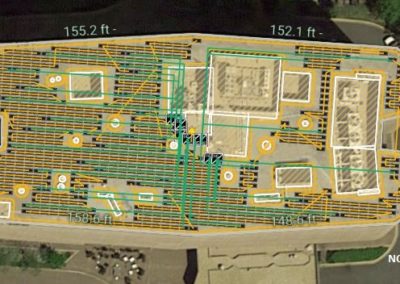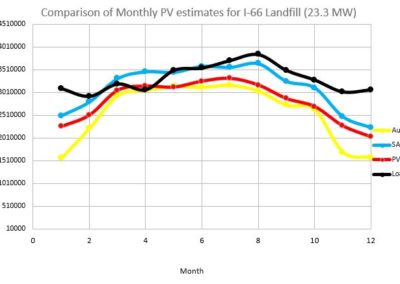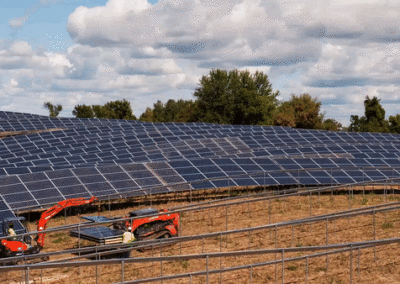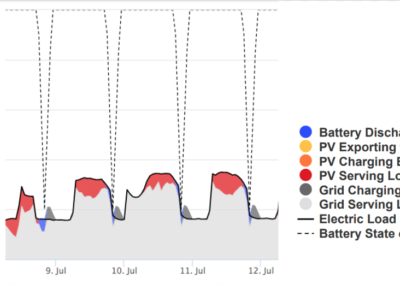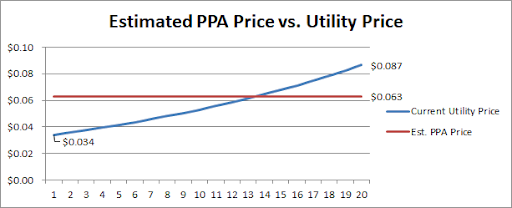Solar District Cup
Overview
2020 Solar District Cup
The Solar District Cup is a new competition presented by the National Renewable Energy Laboratory (NREL) and the US Department of Energy. Multidisciplinary collegiate teams compete to design and model distributed energy generation systems for a campus or district with the primary goal to maximize energy offset and financial savings. A panel of judges selects a winning team based on a design concept supported by techno-economic analysis. Our team was assigned the Crystal Parks district located in Arlington, VA, which consists of 5 mixed-use office and retail buildings. The Crystal Parks District is owned and managed by JBG Smith, a real estate investment firm operating in the greater Washington D.C. area. Our goal was to design a photovoltaic and energy storage system to offset 100% of the annual electricity used by the five buildings in the district. We investigated system performance, financial viability, construction and development in order to design the optimum system for JBG Smith and the Crystal Parks District.
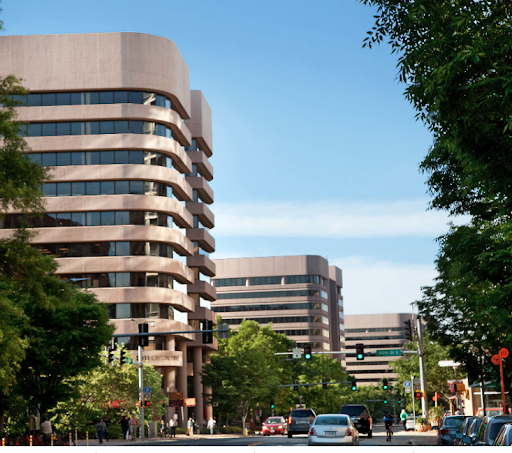
Elevator Pitch
Design Approach
Initially, our team was not very familiar with solar projects and typical design considerations. Most of the fall semester was spent getting familiar with the district and possible alternatives for the design of a PV (photovoltaic) system. We determined the buildings in the district could not provide enough area to host a system capable of meeting the 100% offset goal. We researched potential offsite locations to place a larger PV system with an ‘innovative’ aspect. For example, we looked at the parking lots of the Ronald Reagan Washington National Airport, various bus stations and laydown yards, and nearby bodies of water for floating PV. We landed on a decommissioned capped landfill site, the I-66 landfill in Fairfax County, VA.
We used various optimization tools to validate our design. To come up with conceptual system designs for the rooftop system and landfill system we primarily used Aurora Solar and NREL’s System Advisor Model (SAM). Aurora solar helped to identify shady areas on the rooftops and place panels in areas that would receive optimal sun exposure throughout the year. SAM and Aurora Solar were used to estimate the energy production of the systems and optimize panel tilt and spacing.
Open DSS was used to evaluate rooftop PV impacts on the power distribution system in each building. NREL’s ReOpt Lite was used to simulate battery operation given the energy consumption and utility rate for the district. It was also used to investigate the ability of a battery system to provide power in the event of an outage, often referred to as resiliency.
Microsoft Excel based financial models were developed to fit the parameters of the project and the district. The rooftop PV systems were modeled as ownership models where JBG Smith would finance and own the system. The rooftop systems would generate returns through tax credits, depreciation and utility cost savings. For the off site landfill project we modeled the project as if a solar developer were to construct it and the district would agree to purchase the energy produced at the landfill. This type of arrangement is known as a Virtual Power Purchase Agreement (VPPA). It is virtual because there is no direct transfer of electricity to the district rather the district continues to receive power from the grid which is offset with energy added to the grid from the project. We analyzed the project from the developer’s perspective as well as on the customer side from the district’s perspective.
A stakeholder analysis as well as a development plan was created for the proposed systems. A construction plan was also created to consider construction methods specifications, and an estimated timeline
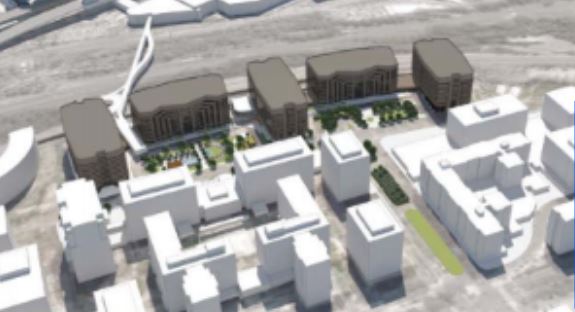
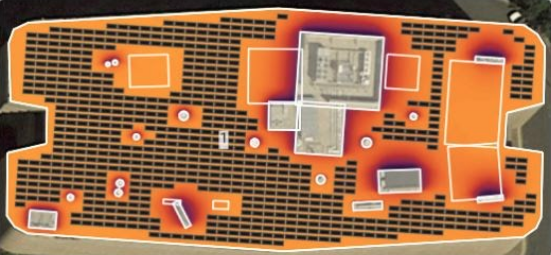
Design Solution
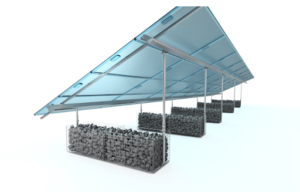 Our team has designed two solar solutions for JBG Smith and the Crystal Parks district. For solution one, we are proposing rooftop PV systems for all 5 buildings with approximately 160-290 kW of PV on each rooftop. Rooftop modules will be mounted using APA Solar’s ReadyRack system and have a fixed tilt angle of 10 degrees. A low tilt angle allows for modules to be tightly spaced without self shading, resulting in space for more modules maximizing generation on site. A low tilt angle also reduces wind loading on modules reducing mounting costs. Our rooftop designs feature Canadian Solar HiKu CS3W-400P modules paired with SMA Sunny TriPower 30,000TL-US string inverters for each rooftop system. Analysis of the building’s electric distribution system showed rooftop PV would not cause over voltage or thermal overload in the system. To save on construction costs we suggest aligning rooftop PV construction schedules with existing plans for new development in the district.
Our team has designed two solar solutions for JBG Smith and the Crystal Parks district. For solution one, we are proposing rooftop PV systems for all 5 buildings with approximately 160-290 kW of PV on each rooftop. Rooftop modules will be mounted using APA Solar’s ReadyRack system and have a fixed tilt angle of 10 degrees. A low tilt angle allows for modules to be tightly spaced without self shading, resulting in space for more modules maximizing generation on site. A low tilt angle also reduces wind loading on modules reducing mounting costs. Our rooftop designs feature Canadian Solar HiKu CS3W-400P modules paired with SMA Sunny TriPower 30,000TL-US string inverters for each rooftop system. Analysis of the building’s electric distribution system showed rooftop PV would not cause over voltage or thermal overload in the system. To save on construction costs we suggest aligning rooftop PV construction schedules with existing plans for new development in the district.
To increase the value of a battery system to the district, we recommend installing an energy storage system independently and at a later date. The cost of batteries is expected to decline significantly over the next decade. Currently a battery system is not able to generate enough energy cost savings to cover the initial costs. We decided that resiliency benefits could be obtained for a much lower cost by waiting 5 years to purchase a battery system.
Our off-site PV solution will cover approximately 80 acres and will be 23.3 MW in size. We chose to use Canadian Solar BiHiKu CS3W-400PB-AG bifacial modules for the landfill project. Bifacial solar panels are up to 20% more efficient than traditional solar panels. Using bifacial modules in our design reduces the number of modules and system footprint while still producing enough energy to offset consumption at Crystal Parks. Further, bifacial modules have become increasingly more competitive with traditional modules due to exemption from import tariffs.
Tracking systems are common for larger PV arrays but are expensive and often require more substantial foundations for mounting systems. In order to avoid disturbing the landfill cap we have selected a fixed tilt geo-ballast system for our design. The geo-ballast mounting system is typically loaded with rocks. The I-66 landfill neighbors a recycling plant, therefore we intend to acquire recycled concrete and other material from this plant in order to load the geo-ballasts .
Our financial models for the I-66 Landfill show that a developer would be able to offer the district a flat $0.063/kWh VPPA rate and still be able to achieve a market return on investment for the project. Under this agreement the district would pay more for electricity in the early years and less in the later years due to the fact that the utility rate will escalate over time compared to the flat VPPA rate. The district would end up paying about 15% more for electricity by purchasing power from the project, in return they would offset 100% of their energy usage with renewable solar energy.
Our designs will allow the Crystal Parks district to meet their goal of shifting to 100% renewable energy. Rooftop systems will reduce utility costs and generate a portion of energy used by the building on-site. The district will be able to significantly reduce their carbon footprint helping to address climate change. They will also be in compliance with the DC Clean Energy Omnibus Bill and other sustainability and efficiency goals.
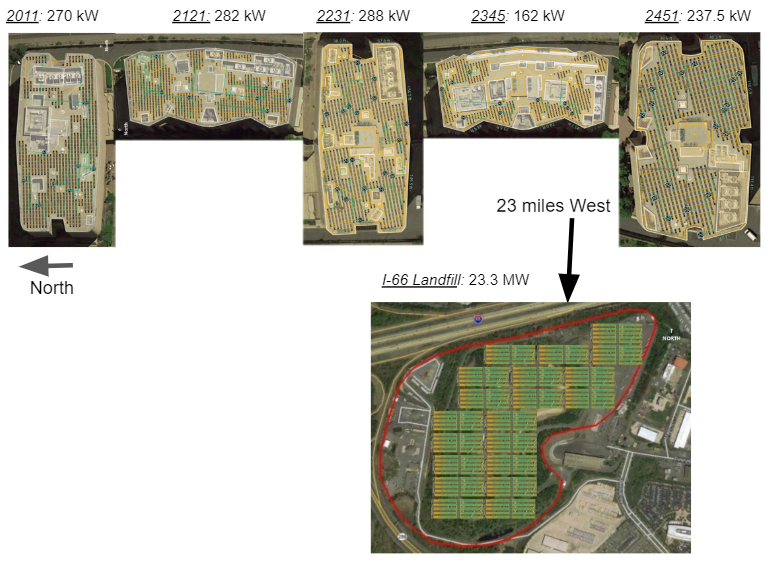
Next Steps
After presenting at the Virtual Design Showcase, the team will also present their solution at the virtual Solar District Cup competition. Industry leaders and NREL personnel will serve as judges, and we have 15 minutes to explain our solution. After the judges determine the best solution for each district use case, the top three teams compete head-to-head for the “industry favorite” award.
The Solar District Cup will be held again in 2021. Our advice to future teams is to spend time understanding the needs and wants of the district and make sure that designs are aligned with them. Research and reach out to industry experts to learn about conventions and trends in the solar industry. Overall this project has been a success despite the challenges we faced with this project our team has learned a lot and created a design that will meet the goals of the district.
Meet the Team
Cami De Voto Noonan
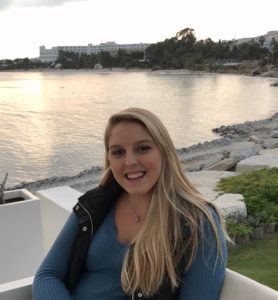 Cami is senior studying Engineering Physics. Cami focused on the conceptual system design for the project using NREL’s System Advisor Model (SAM) and PVWatts.
Cami is senior studying Engineering Physics. Cami focused on the conceptual system design for the project using NREL’s System Advisor Model (SAM) and PVWatts.
Nathan Collins
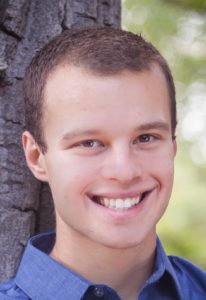 Nathan is a senior studying Electrical Engineering. He focused on the distribution system impact for the project using Open DSS.
Nathan is a senior studying Electrical Engineering. He focused on the distribution system impact for the project using Open DSS.
Cara Fragomeni
 Cara is a senior studying Civil Engineering. She focused on the construction and development plan for the project.
Cara is a senior studying Civil Engineering. She focused on the construction and development plan for the project.
Luke Kroh
 Luke Kroh is a senior in Civil Engineering. For this project Luke focused on the financial modeling as well as conceptual design using Aurora Solar.
Luke Kroh is a senior in Civil Engineering. For this project Luke focused on the financial modeling as well as conceptual design using Aurora Solar.
Paul Slade
 Paul is senior studying Mechanical Engineering. He focused on the battery analysis for the project including cost and optimization strategies using ReOpt lite.
Paul is senior studying Mechanical Engineering. He focused on the battery analysis for the project including cost and optimization strategies using ReOpt lite.
